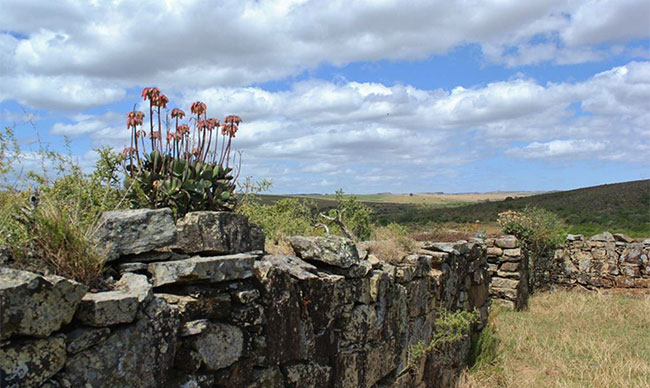Historically the Renosterveld of South Africa’s Overberg Region would have encompassed a whole landscape, with large predators and vast herds of game such as the Bontebok and now extinct Quagga. Over time across the Overberg the game was hunted out and little by little, this habitat was ploughed up to become the agricultural landscape that we know today. All we have left are written records by Skead and other authors to give us just a hint of what this landscape was like in the past.
Just 5% of Overberg Renosterveld remains, mostly in tiny fragments where the veld is too steep or rocky to plough. So little of Overberg Renosterveld is left that it is imperative to conserve what little remains: Not even enough is left to meet conservation targets on conserving threatened ecosystems in line with the Global Strategy for Plant Conservation, so all that we have left is precious.
The farmers of this landscape are custodians of Overberg Renosterveld. What remains of this ecosystem lies between fields of wheat, canola and artificial pasture crops for rearing sheep and cattle. From small quartz koppies home to a unique range of geophytes to narrow kloofs along watercourses as corridors for wildlife, all form part of what is vital to conserve. In order to best conserve Overberg Renosterveld it is essential to work alongside and in partnership with the farmers who are in charge of the Overberg’s lowland biodiversity.
The Overberg Renosterveld Conservation Trust works closely with farmers across the Overberg to help them best manage their veld in line with implementing effective conservation. Resources are made available on management and assistance is available with implementation such as control burns. As much information is fed back to landowners as possible through effective ongoing collaboration.
One of the main tools for feedback to landowners are the ORCT’s ‘Farmer Reports’. One of the main aims of the Trust is having staff on the ground as Extension Officers who visit partner farms regularly, act as a contact point and also undertake regular biodiversity monitoring in their Renosterveld. The ORCT’s Farmer Reports are a tailor-made tool with which to deliver feedback on the findings of these surveys. They are custom written by ORCT staff for each farm and act as a useful and handy reference for the farmer on each farm’s unique Renosterveld biodiversity.
The Trust’s Farmer reports contain background on Renosterveld and its conservation and information on why it is so special within South Africa’s Cape Floristic Region. These documents tell the story of how Overberg Renosterveld came to be Critically Endangered and why we should do all possible to conserve this imperilled ecosystem. There is a concise list of terminology definitions and key management guidelines: In other words the ‘Golden Rules’ of Renosterveld management.
Following this key background information to contextualise Renosterveld conservation and management, the reports then go on to include key management guidelines about how best to manage Renosterveld on that particular farm. Each farmer is given feedback on how effectively Renosterveld management and conservation is taking place and given tips on what they can do better if applicable. Each report also contains photos and data highlights of what species have been found in the farm’s Renosterveld as well as which species found are rare and threatened alongside their status on the Red List.
These reports help to raise awareness among landowners about the importance of the Renosterveld biodiversity of which they are custodians as well as to act as a take home information resource to inform effective management.
The ORCT would like to take the opportunity to thank all the farmers who have collaborated with the Trust in conserving the beautiful, species diverse and unique habitat that is Overberg Renosterveld. We couldn’t do it without you!



